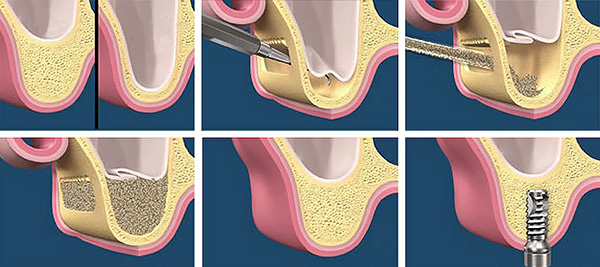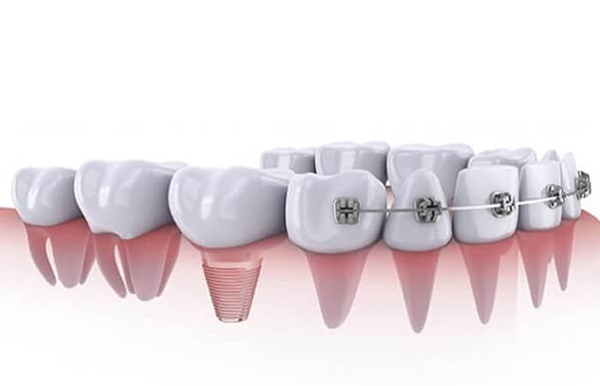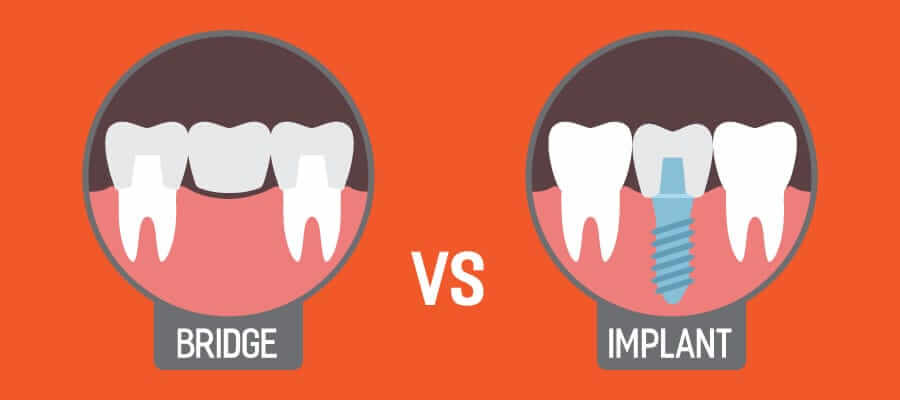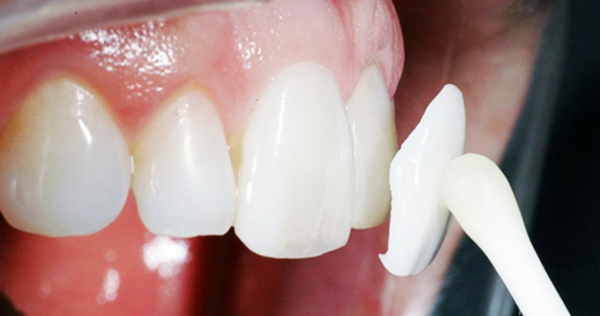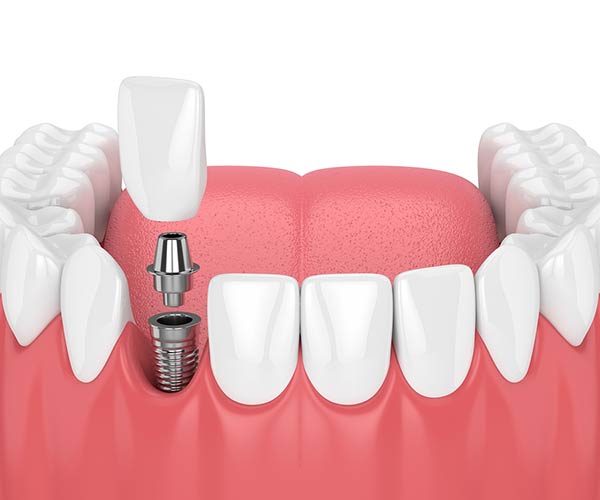Contents
Symptoms of a Loose Dental Bridge & Steps to Fix it
Dental Bridges: What are they?
Dental bridges are a dental restoration which are used to replace missing teeth. They are designed to bridge the gap caused by one or more missing teeth, allowing individuals to have a complete and functional smile.
Dental bridges can be made from a variety of materials, including porcelain, gold, or a combination of materials. Porcelain bridges are popular because they can be made to match the color and texture of natural teeth, making them virtually indistinguishable from the surrounding teeth.
Dental bridges offer a variety of benefits, which are:
- Restoring the ability speak properly and the chewing function of the teeth
- Preventing the remaining teeth from shifting or moving out of place
- Improving the appearance of the smile
- Maintaining the shape of the face

What causes the Dental Bridge to become loose?
Loose dental bridges can be caused by several factors, including:
Decay
Decay is one of the most common causes of loose dental bridges. When decay develops in the teeth or implants that support the bridge, it weakens the structure, making it unable to hold the bridge in place. If left untreated, the decay can continue to deteriorate the teeth or implants, which can eventually lead to the loss of the bridge. To prevent this, it is important to practice good oral hygiene and visit the dentist regularly for check-ups.
Trauma
Trauma to the mouth or face is another common cause of loose dental bridges. This can happen due to a fall, an accident, or a blow to the mouth or face. Trauma can damage the teeth or implants that support the bridge, causing them to become loose or dislodged. If you have experienced trauma to your mouth or face, it is important to see a dentist right away to prevent further damage.
Wear and Tear
Over time, dental bridges can become loose due to wear and tear. The constant pressure from biting and chewing can cause the supporting teeth or implants to become worn down, weakening their ability to hold the bridge in place. To prevent this, it is important to avoid biting down on hard objects and to practice good oral hygiene.
Poor Fit
A poorly fitting dental bridge can also become loose over time. If the bridge is not properly fitted to the supporting teeth or implants, it may shift or move, causing discomfort and pain. A poor fit can also cause the bridge to become dislodged or fall out. To prevent this, it is important to have your dental bridge fitted by a qualified dentist and to have it regularly checked for proper fit and function.
Symptoms of a loose Dental Bridge
Sensitivity
When a dental bridge is loose, you may experience sensitivity to hot or cold foods and drinks. This happens because the bridge is no longer fitting tightly against the teeth, which allows air and liquid to come into contact with the exposed dentin. If you experience sensitivity, it is important to see your dentist as soon as possible.
Pain
Pain is another symptom of a loose dental bridge. There may be mild or severe pain, and it may occur constantly or intermittently. You may feel pain when biting down or chewing, or you may feel pain when the bridge is touched or moved. If you experience pain, you should see your dentist immediately.
Movement
A loose dental bridge may move when you bite down or chew. You may feel the bridge shift or move, or you may hear clicking or popping sounds. This can cause discomfort and pain, and it can also make it difficult to eat or speak. If you notice movement in your dental bridge, you should see your dentist right away.
How to Fix a Loose Dental Bridge
Dental bridges are a popular dental restoration used to replace missing teeth. They are designed to be permanent, but over time, they can become loose and cause discomfort and pain. If your dental bridge is loose, you should go to see your dentist as soon as possible.
Evaluation
The first step in fixing a loose dental bridge is to have it evaluated by your dentist. Your dentist will examine the bridge and the supporting teeth or implants to determine the cause of the problem. Once the cause is identified, your dentist will recommend the appropriate treatment.
Recement
If the dental bridge is simply loose and not damaged, your dentist may be able to recement it back into place. This involves removing the old cement and cleaning the area before applying new cement to the bridge and the supporting teeth or implants. Your dentist will then carefully position the bridge and allow the cement to dry.
Replacement
If the dental bridge is damaged or cannot be recemented, your dentist may recommend replacing it. This involves creating a new dental bridge that is custom-made to fit your mouth and match the surrounding teeth. Your dentist will prepare the supporting teeth or implants and take impressions of your mouth to create the new bridge. Once the new bridge is ready, your dentist will carefully position it and secure it in place.
Dental Implants
In some cases, a loose dental bridge may be a sign that the supporting teeth or implants are also damaged or deteriorating. In these cases, your dentist may recommend dental implants as a more permanent solution. Dental implants involve placing a small titanium post into the jawbone to serve as a replacement tooth root. Then the dental bridge is placed onto the implants. A stable restoration is completed and it can last permanently.
How to Prevent Dental Bridge from Becoming Loose
Practice Good Oral Hygiene
Maintaining good oral hygiene is not only important for the health of your teeth and gums, but it is also essential for preventing dental bridges from becoming loose. When a dental bridge becomes loose, it can cause discomfort, pain, and even lead to further dental problems. Therefore, it is important to take certain steps to ensure that your dental bridge stays in place and functions properly.
One of the best ways to maintain good oral hygiene is to brush your teeth twice a day with fluoride toothpaste. This will help to remove food particles and plaque that can weaken the supporting teeth and gum tissue, leading to a loose dental bridge. In addition to brushing, it is also important to floss daily to remove any food particles that may be stuck between your teeth and gums. This will help to keep your gums healthy and prevent them from becoming inflamed or infected.
Another important aspect of maintaining good oral hygiene is to use an antiseptic mouthwash. An antiseptic mouthwash can help to kill bacteria in your mouth, freshen your breath, and prevent infections. Additionally, you may want to consider using a dental floss threader to clean under your dental bridge. This will help to remove any debris that may have accumulated under your bridge and ensure that it stays clean and healthy.
Avoid Hard and Sticky Foods
To maintain the longevity and functionality of your dental bridge, it is crucial to avoid certain types of foods that can potentially cause damage. Hard and sticky foods, such as hard candy, nuts, popcorn, and ice, can put pressure on your dental bridge, causing it to loosen or even break. Sticky foods like caramel and gum can also stick to your dental bridge and pull it out of place, causing discomfort and potential damage. However, if you cannot resist the temptation of these foods, it is recommended to chew them on the opposite side of your dental bridge to minimize the risk of damage.
Wear a Mouthguard
If you are an individual who engages in contact sports or activities such as boxing, wrestling, or football, it is essential to take proper precautions to protect your dental bridge from potential damage. One such precaution is to wear a mouthguard. Similarly, if you suffer from bruxism, or teeth grinding, particularly during sleep, wearing a mouthguard can help safeguard your dental bridge from excessive wear and tear.
It is worth noting that the most effective form of mouthguard is one that is custom-fit by your dentist. While store-bought mouthguards may be more affordable, they are often less comfortable and may not provide the same level of protection as a custom-fit mouthguard. In addition, a properly fitted mouthguard can also help prevent injuries to your tongue, lips, and cheeks, as well as reduce the risk of concussion in contact sports.
Visit Your Dentist Regularly
Regular dental checkups are not only important, but they are also necessary to maintain the integrity of your dental bridge. During these checkups, your dentist will thoroughly examine the fit and condition of your bridge to ensure that it is functioning properly. They may also take X-rays to get a better look at the underlying structures.
Additionally, they will clean your teeth and gums to remove any plaque buildup and prevent the onset of tooth decay and gum disease. This is especially important because these conditions can weaken the supporting teeth and gum tissue, leading to more serious oral health problems down the line. By scheduling and attending regular dental checkups, you can rest assured that your dental bridge will remain in good condition for years to come.
In conclusion, a loose dental bridge can be detected by sensitivity, pain, and movement. If you experience any of these symptoms, it is important to see your dentist as soon as possible. Your dentist can evaluate the bridge and determine the best course of action to fix the problem. Remember, early detection and treatment can prevent further damage and discomfort.







